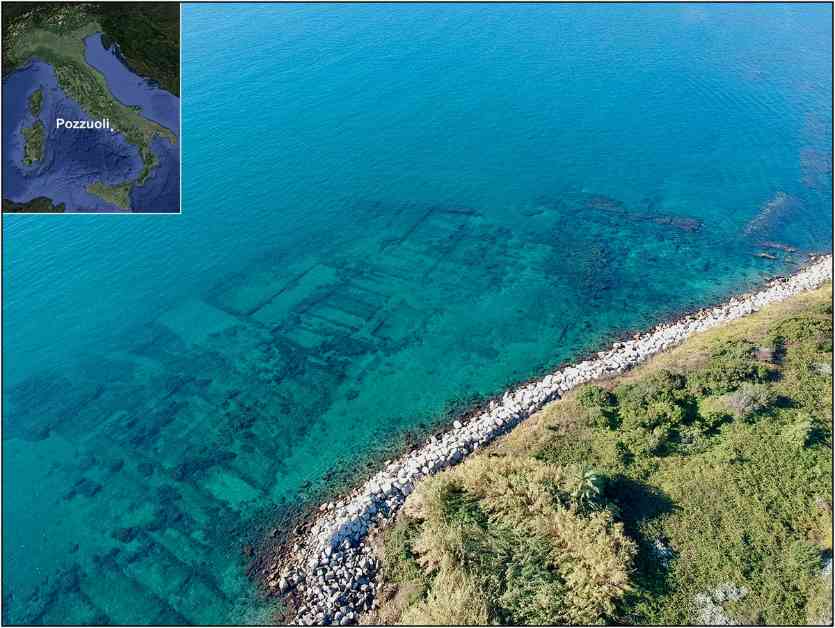Archaeologists have recently made a groundbreaking discovery off the coast of Italy near Naples. They have found ancient altars and inscribed marble slabs that are believed to be part of a temple built by Arabian immigrants from the Nabataean culture over 2,000 years ago. The temple, which was located along the Pozzuoli coast, was buried with a mix of concrete and broken pottery, possibly indicating the departure of foreign traders from the area.
The city of Pozzuoli, formerly known as Puteoli in Roman times, was a major harbor where ships from all over the Roman world would dock to trade goods like grain. The discovery of this ancient temple sheds light on the cultural and religious practices of the Nabataean people, who controlled a vast trade network in luxury goods across the eastern Mediterranean.
The temple features Roman-style walls, two large rooms, and two altars made of white marble. The altars were inscribed with the Latin phrase “Dusari sacrum,” indicating that the temple was dedicated to Dushara, the main god in the Nabataean religion. The presence of Roman architecture and Latin inscriptions suggests a blending of Nabataean and Roman influences in the construction of the temple.
Historians believe that the Nabataeans, known for their control over the caravan trade in Arabia, would have been drawn to Puteoli as a center of commerce. The annexation of Nabataea into the Roman Empire in A.D. 106 marked a significant shift in power dynamics, leading to the collapse of Nabataean control over trade routes in the region. The burial of the temple in the second century A.D. may reflect the changing political and economic landscape during that time.
The discovery of this ancient temple provides valuable insights into the interactions between different cultures and religious practices in the ancient world. It highlights the dynamic nature of trade and cultural exchange in the Roman Empire and the impact of political events on local communities. The preservation of the temple underwater for centuries has allowed archaeologists to piece together the story of the Nabataean immigrants who once called this coastal region home.










